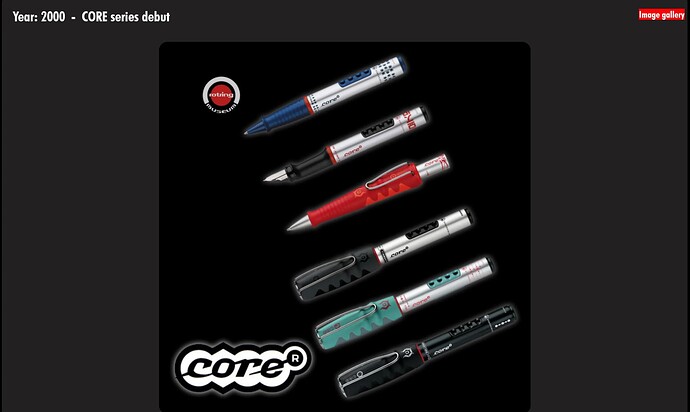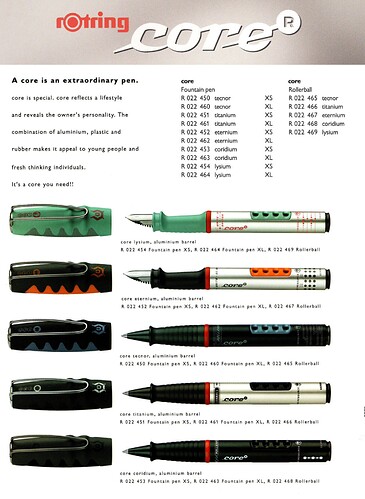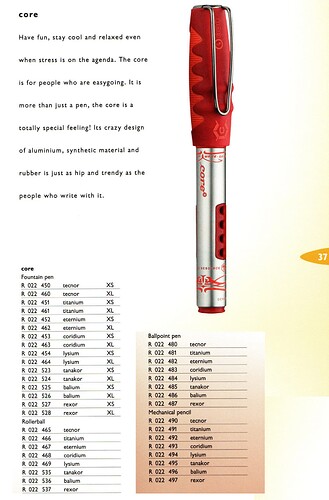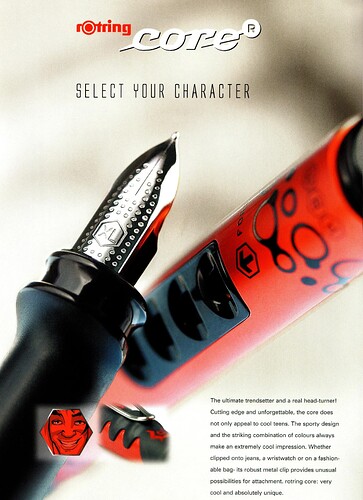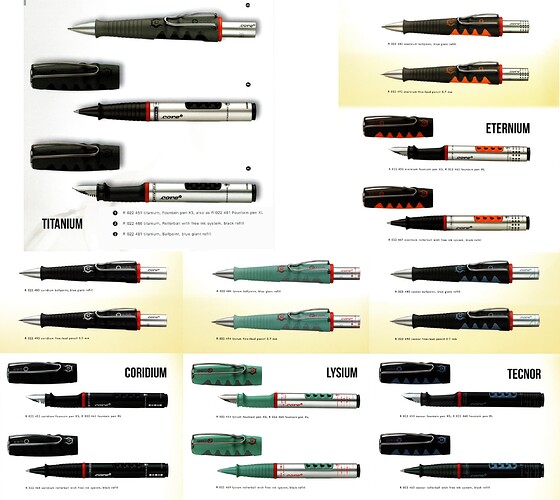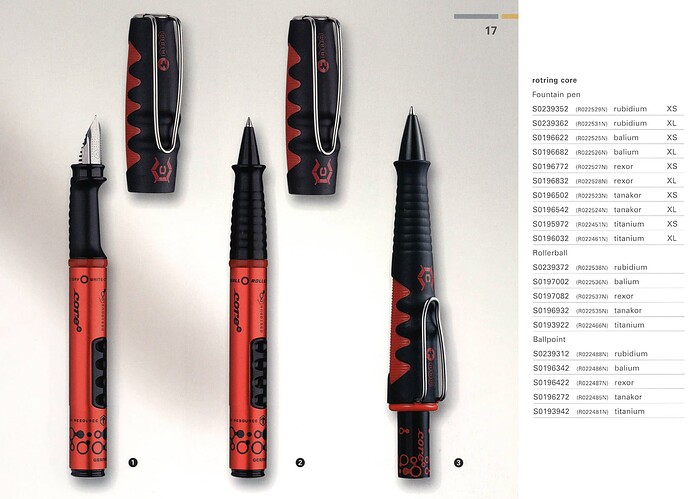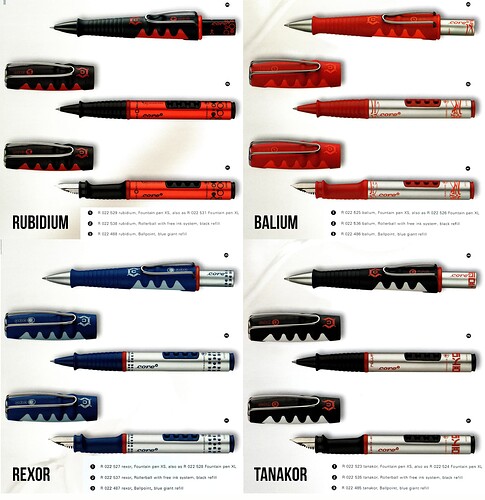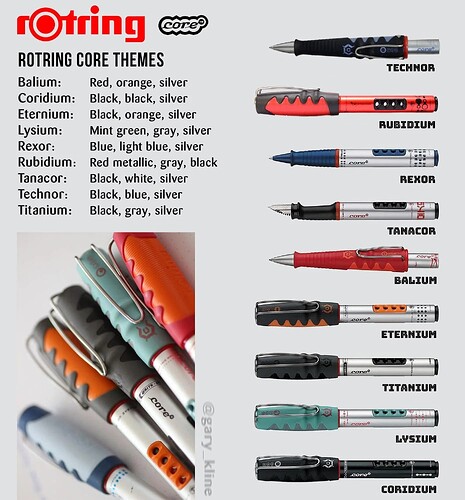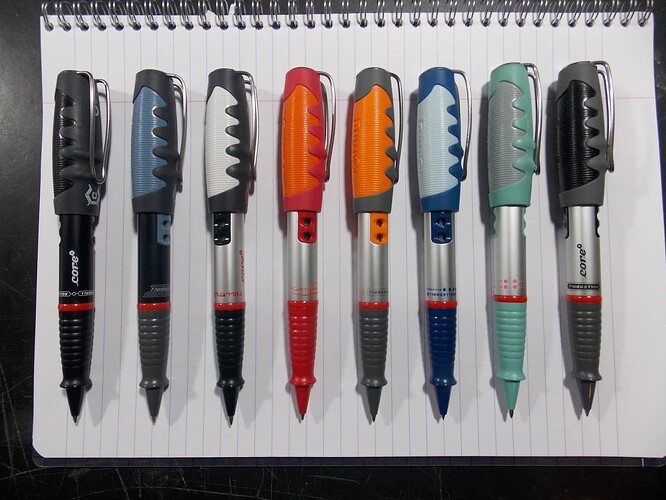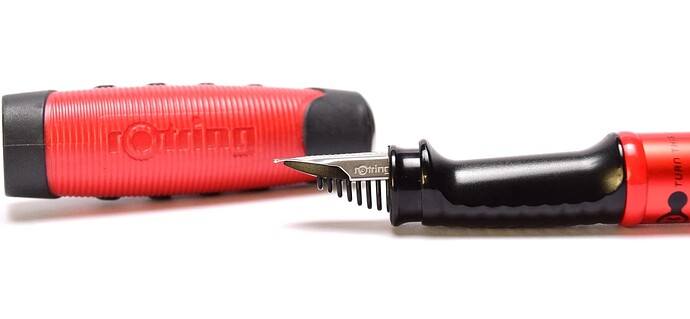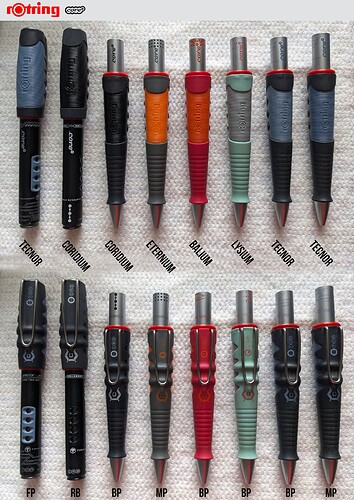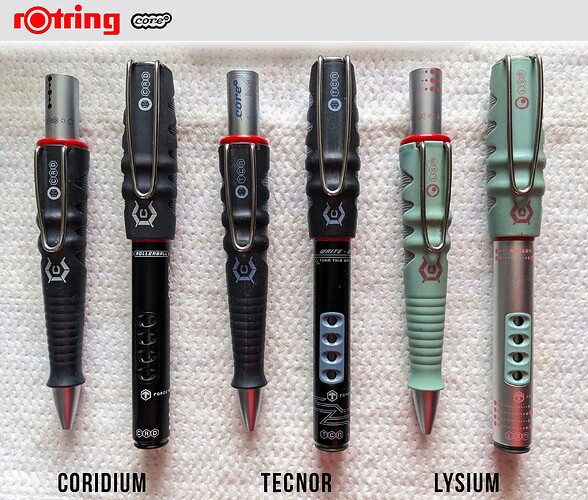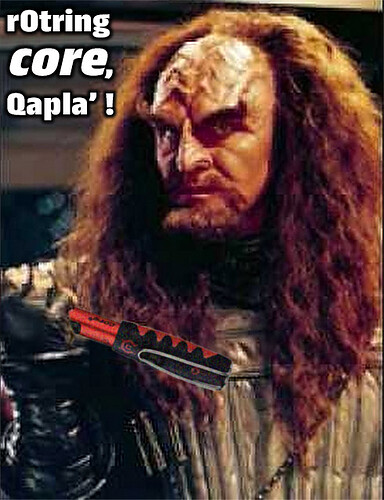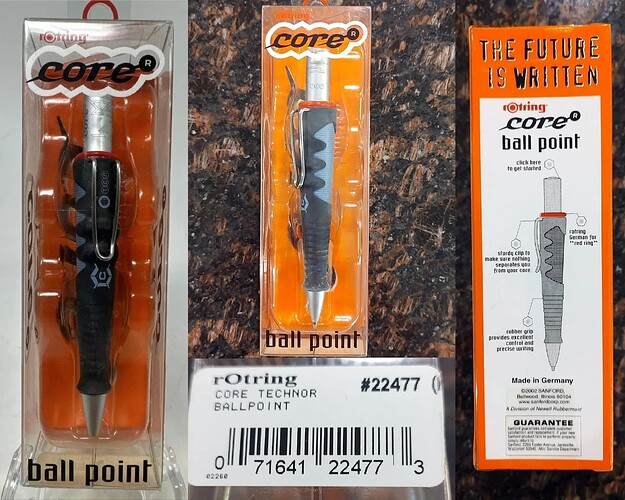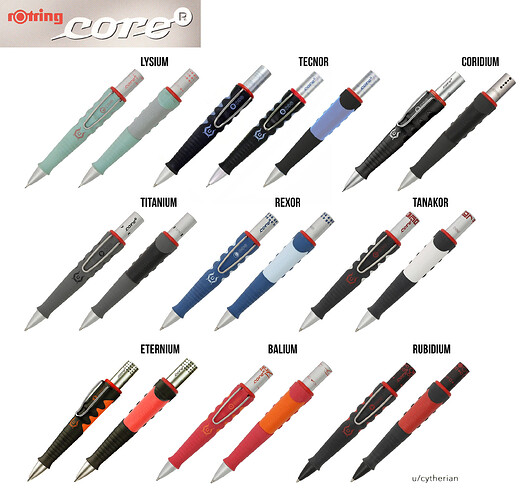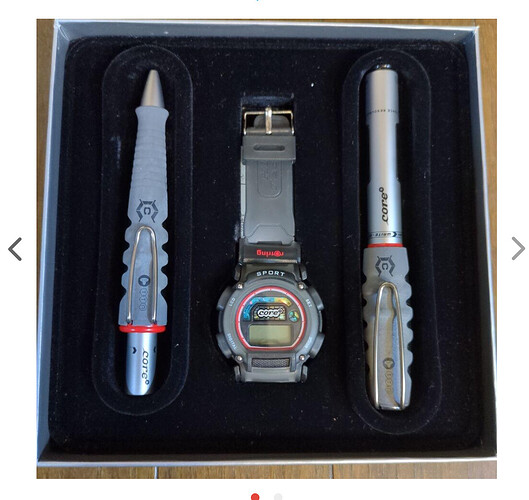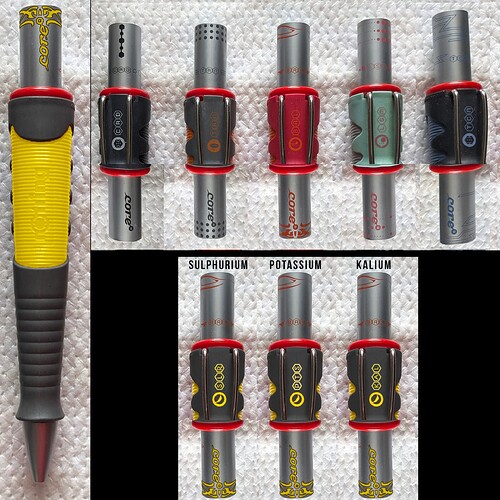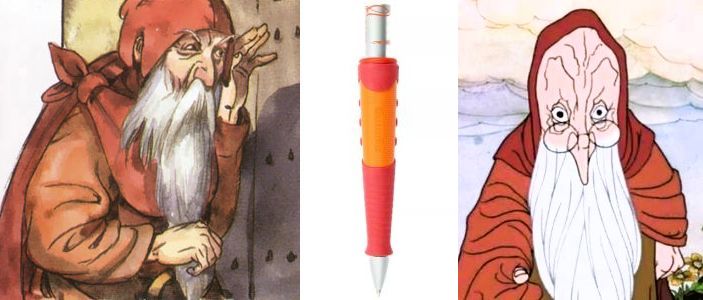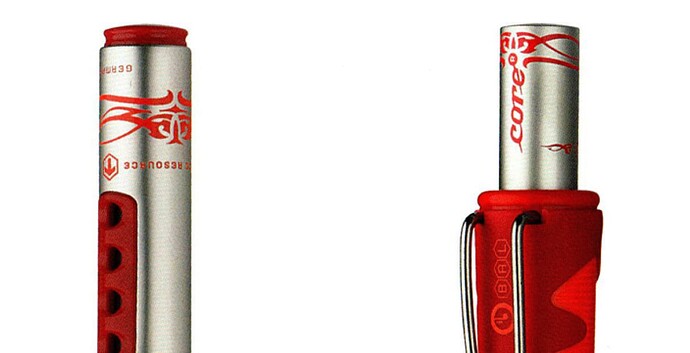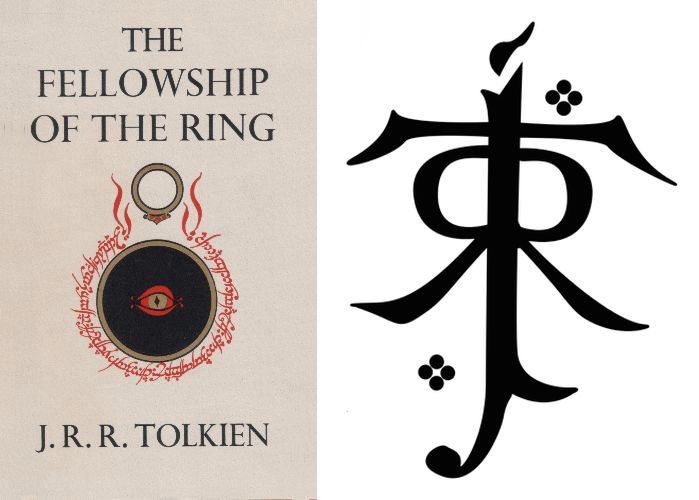While I did write about the rOtring Core before, I thought it might be worth making a post here in the Pen Discussion subsection… since the Core line has a pen to pencil ratio of 4:1. So, here goes.
According to the rOtring museum subreddit expert, the core line by rOtring, Sanford patented core in 2000, with an application date of August 22nd 2000. The grant date was November 22nd 2000, then got a publication date at that time. Production was first facilitated in 2001.
This was a little less than 2 years after the Sanford acquisition of rOtring. The core line had a total of 9 colorways produced. I do not know precisely when this line was discontinued, but it seems likely that 2007 was the last year of production. While electronic catalog copies available online don’t show core pens past 2005, the website had showed them to 2007.
In 2000~2001, rOtring released these 5 core colorways:
Lysium, Eternium, Tecnor, Titanium, and Coridium in only fountain pens and rollerballs.
In 2002, rOtring added 3 more core colorways:
Balium, Tanakor, and Rexor. Plus, there were now click-style ballpoints and mechanical pencils available.
From the 2005 catalog:
Combined images from 2001 to 2005 catalogs:
In 2004, rOtring added 1 more core colorway, but dropped 4 others:
Rubidium added, but Coridum, Eternium, Tecnor, and Lysium dropped. Also, no mechanical pencils.
Here’s the full lineup of all the core models with a variety of writing instrument types:
I did manage to grab a collector’s image that shows all of the rollerball colorways, except for Rubidium:
The core fountain pen is a rather unusual design, not just for the rather daring and bold body furniture. The grip is offset… lower into the body, such that your index finger rests closer in line with the tip of the nib. It’s actually a bit of an ingenious concept. It’s almost as if the nib is a direct extension of your finger tip.
Across the period of the core, rOtring had produced a prolific amount of inventory that didn’t sell as well as expected, so years later caches of them would get offloaded to various buyers who’d then in turn sell them at a nice discount online. I picked up the matching Tecnor ballpoint and mechanical pencil around that time (like $6~$9 a piece). I was aware of a few other colorways, but hadn’t really explored the Core line. Frankly, they’re not exceptional writing instruments–more of a curiosity for their “weird” or “unconventional” designs.
Here are a few from my personal collection:
Well, kind of bizarre to think that it has been a quarter of a century since the core came out! Time flies. So, that does make them a novelty collectible now. I hadn’t set out to collect this line… it just sort of happened by random chance. And I don’t have everything, clearly. I don’t know if I’ll ever end up getting every single colorway, as the “clutter effect” bothers me. I’m not enamored by all of the colorways anyway. Tanacor, Titanium and Rexor are kind of boring to me (very similar to each other), and Rubidium is a rather strange one–the only bright colored metallic body pen, but then the ballpoint doesn’t use that bright color for the body. It looks almost like they took the Eternium and then coated the rear plunger in black (instead of silver, which appears for all the rest).
Anyway… onto the overall experience of this core series. I don’t think I’ve seen a more peculiar range of design decisions. Just look at that fountain pen with its offset grip. It actually is remarkably ergonomic as the nib tip ends up acting like a direct extension of your finger tip–as if you’re pointing with your finger the exact spot where the nib lays down the line. Sadly, the rest of the pen is almost comical, with it’s immensely oversized cap. rOtring designed it purposefully to be posted (there’s a detent)… but when you do that the pen is quite back-heavy. It does take some getting used to.
The pencil is a clutch forward design. No pipe. The mechanism works fine, though there is a bit of rattle, and lead advancement is very generous, having owned 2 examples to compare. The body shape is so steeply tapered, with a flared grip. It’s strange. But I must say, also fun. And then there’s that huge sturdy clip. The contour of the body is filled with ridges and bumps. It makes me think of something a Klingon would write with (“K’plah!”). And yes, I’d say that it’s not a long writing session pencil. The butt of the joke is the eraser. You have this ENORMOUS girth at the back of the pencil, and inside the shaft is actually a fairly modestly sized eraser. It’s workable except that the plastic frame is a design failure. There’s a set of plastic prongs that tighten around the eraser at the extension you want, but it just doesn’t hold. Maybe since the eraser ossified over time, it shrank? It almost looks like there could be a fastener ring for the holding prong.
The ballpoint is OK. Probably the most usable of the bunch, all things considered. The rollerball is a bit oddly balanced with the cap posted… but you could use it without posting. And that really big cap doesn’t make it pocket friendly. Still, it’s a definite conversation piece. “My pen comes with ridges. Just like a Klingon!”
One last thing – the lead size isn’t noted anywhere on the body. They only came in 0.7 mm. And it was probably a cost saving measure, as the BP and MP use the exact same body, cap, and nose cone.
rOtring went to town on themes. I think there were 9 of them altogether. Most of the names were based on an “ism” suffix. Balium, Lysium, Coridium, Rubidium, Eternium, Titanium… then Tecnor, Tanakor… and Rexor. As part of the design theme, rOtring reduced those names to 3 letter codes that appear on the pen bodies. So Tecnor is TCN, Balium is BAL, Lysium is LSM, Coridium is CRD, Tanakor is TNK, Titanium is TTN, Rexor is REX, Rubidium is RBD, and oddly Eternium is TRN (I’d have thought ETN). Those initials appear on the cap and on the body, and on the plunger. Each model has it’s own unique symbol and line graphics as well.
You would think that this really wacky and quirky writing instrument line would have at least one or more devotees who collected the whole lot… but I’ve yet to stumble across a gallery showing off such a collection. I have to believe someone out there has all of them and may one day post about them online.
You know, seems they were totally neglectful of the color yellow. And I have just the name: Potassium! You know, because… bananas. ![]() But Sulphurium also works. Also, Kalium… the Indonesian word for Potassium. There’s also Κάλιο, in Greek.
But Sulphurium also works. Also, Kalium… the Indonesian word for Potassium. There’s also Κάλιο, in Greek.
Last but not least… the aspect of collectability. Well, prices are all over the place. Because of the age, there are sellers trying to command relatively high prices compared to how steeply discounted you can periodically find them. When a seller manages to acquire a huge batch of core writing instruments rather cheaply (I’d once gotten inside info from a seller, who’d bought a large box of them from a store closeout, amounting to about $1 per pen). The cheapest I’d ever gotten one was $6 USD. There are stretches when sites like eBay and Etsy have light inventory and sellers will try to get $20~$50, depending upon the colorway. Historically I’ve found that periodically sellers show up with large inventory and bring those prices down below $20, sometimes as low as $10 a piece if you buy several at once.
In closing, I would emphasize that the writing experience will be fine with some people, and off-putting for others. Today, the rOtring core is just a strange and amusing writing instrument line that’s fun to have at least one as a conversation piece. And if you enjoy the colorways, collect as many as you can!
The core writing instruments are commonly sold in thin cardboard boxes with a hexagon grid design (white on gray). But occasionally you can find the more elaborate display packaging.
Btw, notice the label showing “Technor.” This was a typo that proliferated quite a bit, so occasionally you will see that colorway listed as “Technor” instead of “Tecnor.”
Also, here’s some rather amusing marketing text taken from the catalog pages:
2001:
A core is an extraordinary pen.
core is special. core reflects a lifestyle
and reveals the owner’s personality. The
combination of aluminum, plastic, and
rubber makes it appeal to young people and
fresh thinking individuals.
It’s a core you need!!
2002:
Have fun, stay cool and relaxed even
when stress is on the agenda. The core
is for people who are easygoing. It is
more than just a pen, the core is a
totally special feeling! Its crazy design
of aluminum, synthetic material and
rubber is just as hip and trendy as the
people who write with it.
2004:
The ultimate trendsetter and a real head-turner!
Cutting edge and unforgettable, the core does
not only appeal to cool teens. The sporty design
and the striking combination of colours always
make an extremely cool impression. Whether
clipped onto jeans, a wristwatch or on a fashion-
able bag- its robust metal clip provides unusual
possibilities for attachment. rotring core: very
cool and absolutely unique.
Member @Dux also sent me these one-liner bits on the names:
Eternium. Built for eternity; bright orange and grey illuminate the path for sporting freaks.
Tecnor. Ultra hard beats in blue and black thump you to an alternative universe.
Lysium. Hey girls, listen up! Turquoise and pink are the new colours of love.
Titanium. Metallic stars in grey and black show real strength.
Corridium. The ultimate in mega cool black – you have come to the point of no return.
I thought it might be interesting to get all of the colorways represented together, using the click-style ballpoint/mechanical pencil bodies.
